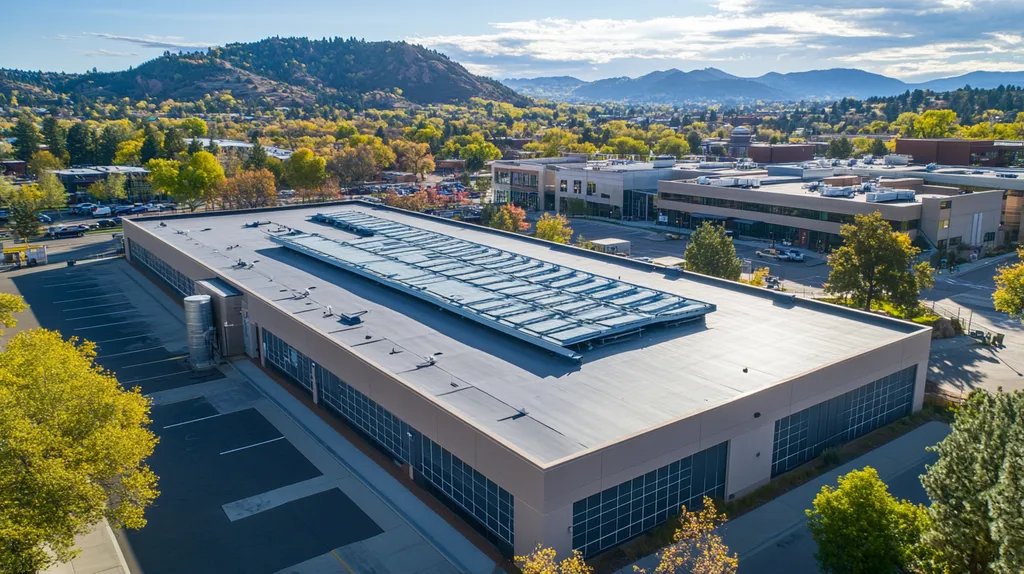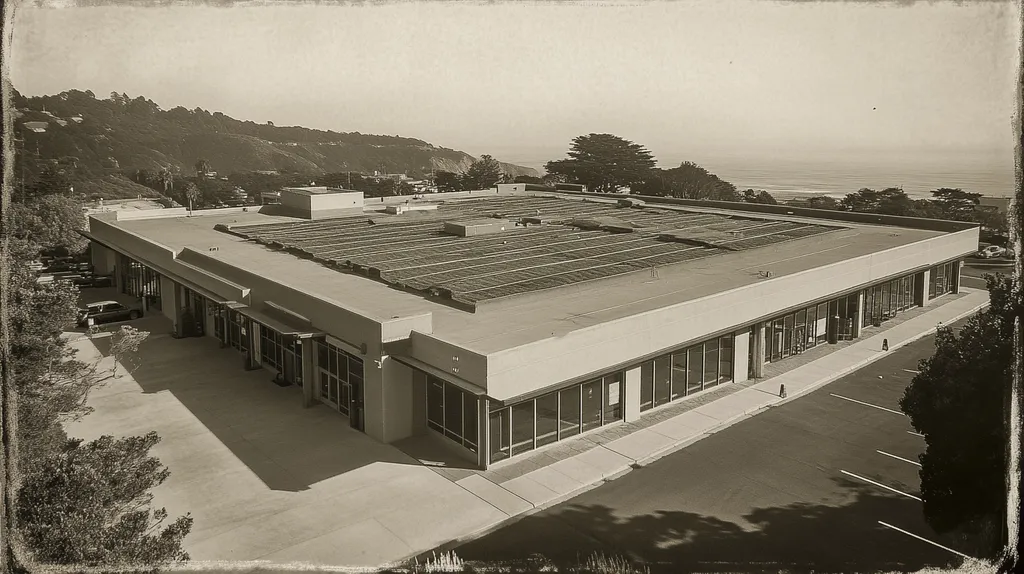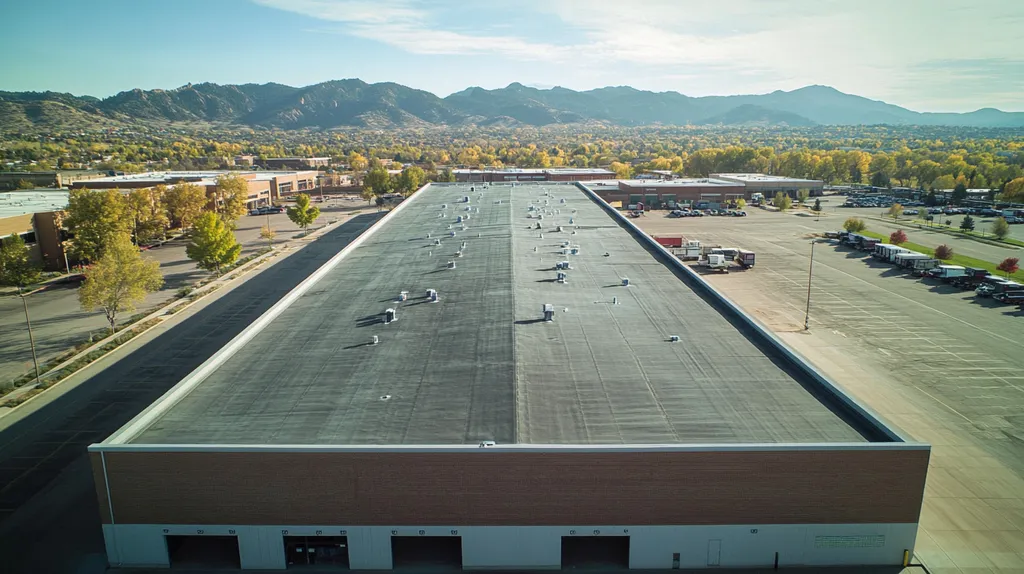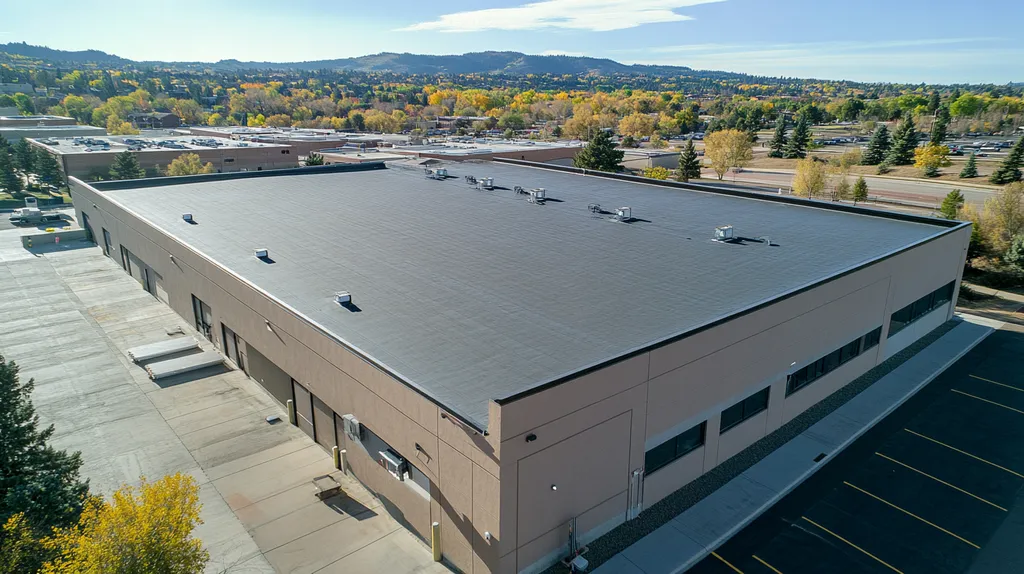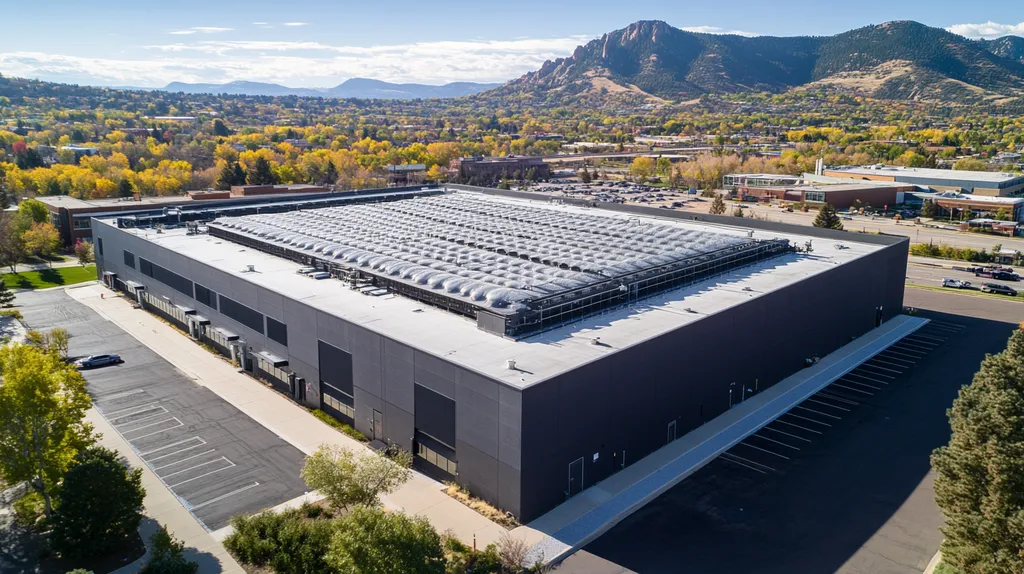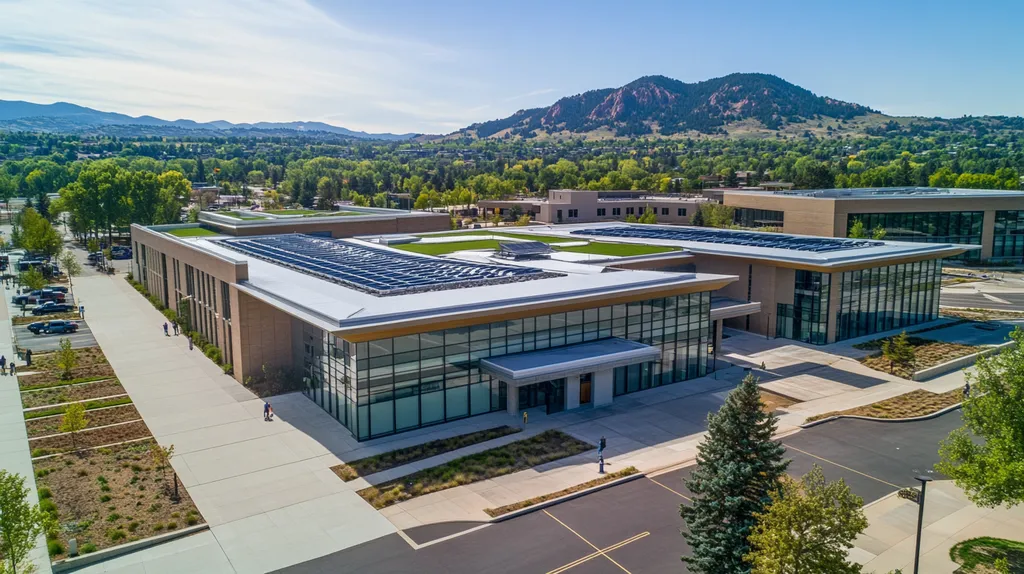For commercial facilities, unplanned roof repairs cost U.S. businesses over $5 billion annually in operational disruptions and lost productivity. Even minor roofing issues can escalate into major problems that force partial or complete facility shutdowns.
Modern repair strategies focus on minimizing business interruption through careful planning, innovative materials, and strategic execution. Understanding these approaches helps facility managers maintain continuous operations while protecting their building assets.
This comprehensive guide explores proven methods for reducing repair-related disruptions, from initial assessment through project completion, with practical solutions for maintaining business continuity throughout the process.
SECTION 1: THE BASICS EXPLAINED
Commercial roof repairs represent a critical challenge for facility managers, with unplanned repairs causing up to $300,000 in daily operational losses for large facilities. Beyond the immediate repair costs, disrupted business operations can damage client relationships, compromise worker safety, and impact overall productivity. Understanding the fundamentals of roof repairs helps organizations maintain continuous operations while protecting their valuable assets.
What It Is (In Plain Language)
Commercial roof repairs encompass any work needed to restore the protective function of your building’s roofing system. This includes addressing visible damage like tears or punctures, as well as treating hidden issues such as moisture infiltration or deteriorating insulation.
The scope of repairs varies significantly based on your roof type and the extent of damage. Simple repairs might involve patching isolated leaks, while complex projects could require partial membrane replacement or structural reinforcement.
Modern repair approaches emphasize minimal invasion techniques that allow businesses to continue operating during maintenance. These methods include rapid-cure materials and sectional repair strategies that isolate work areas.
Success depends on proper diagnosis and selecting repair methods that match your specific roofing system and operational needs.
Why It Matters (To Your Building)
A compromised roof directly threatens your facility’s core functions. Water infiltration can damage inventory, short-circuit electrical systems, and create slip hazards that put employees at risk.
Building access must remain available throughout repairs to maintain compliance with accessibility requirements. This includes maintaining clear pathways and ensuring temporary structures don’t impede movement. (source: ADA.gov)
Unaddressed roofing issues escalate rapidly, often doubling in repair cost every year they’re ignored. Small leaks quickly become major structural problems that can force partial or complete facility shutdowns.
Equipment and inventory beneath compromised areas remain at constant risk, potentially leading to catastrophic losses during severe weather events.
How It Works
Effective roof repairs start with comprehensive inspection and documentation. Professional assessments identify both obvious damage and early-stage problems that could develop into major issues.
Strategic repair planning considers your operation’s schedule and critical activities. Work zones are carefully isolated to contain dust, noise, and other disruptions that could impact daily operations.
Modern repair techniques utilize rapid-cure materials and phased approaches that minimize facility exposure. This allows sections to be completed and returned to service quickly while work continues in other areas.
Quality control measures ensure repairs meet manufacturer specifications and building codes. Post-repair testing verifies watertightness and structural integrity before work areas are returned to normal use.
SECTION 2: PRACTICAL APPLICATIONS
Commercial roof repairs require careful orchestration to maintain business continuity. Large facilities can face operational losses exceeding $500,000 per day when repairs disrupt normal activities. Understanding practical applications helps facility managers implement effective repair strategies while keeping operations running smoothly. This section explores key repair scenarios, timing considerations, and system interdependencies that impact successful outcomes.
Common Uses & Examples
Temporary repairs often serve as immediate solutions for active leaks, using specialized rapid-set materials that can be applied even in wet conditions. These quick interventions prevent water damage while more comprehensive repairs are planned.
Sectional repairs address isolated damage without disturbing the entire roofing system. This targeted approach allows businesses to maintain operations in unaffected areas while work progresses in contained zones.
Roofers should use dedicated external access points and equipment staging areas to minimize interference with daily business activities. This includes avoiding main building entrances and utilizing separate service elevators when possible. (source: IKO)
Preventive maintenance programs help extend roof life through scheduled inspections and minor repairs. These planned interventions reduce the need for emergency repairs that can severely impact operations.
When You Need It Most
Seasonal transitions often reveal roofing issues that require immediate attention. Spring inspections can identify winter damage, while fall assessments help prepare for upcoming cold weather stress.
Equipment upgrades or replacements present ideal opportunities for coordinated roof repairs. Combining these projects reduces overall disruption and ensures proper integration of roof penetrations.
Property transfers and lease renewals typically trigger roof condition assessments. Planning repairs during these transition periods allows work to proceed before new occupants move in.
Emergency repairs become necessary after severe weather events or sudden equipment failures. Having established protocols for these situations helps minimize response time and business impact.
Interactions With Other Systems
Rooftop HVAC units require careful coordination during repairs to maintain climate control. Temporary cooling or heating may be necessary when units must be disconnected or relocated.
Lightning protection systems must remain grounded throughout repair work. This requires careful planning to maintain safety while allowing access to repair areas.
Interior protection systems like dust barriers and moisture monitoring help protect sensitive equipment and inventory during repairs. These safeguards allow critical operations to continue safely.
Drainage systems need evaluation and potential upgrades during major repairs. Proper water management prevents cascading problems that could extend repair timelines and increase disruption.
SECTION 3: KEY TERMINOLOGY DECODED
Clear understanding of roofing terminology directly impacts project success and business continuity. When facility managers misinterpret technical terms, it can lead to improper repairs, extended downtimes, and budget overruns. One manufacturing facility faced a week-long shutdown after confusion between “restoration” and “replacement” led to inappropriate repair specifications.
Essential Terms Explained
Flashing refers to the weatherproofing materials installed where roofs meet walls, pipes, or other structures. Proper flashing installation prevents up to 95% of common roof leaks, making it crucial for maintaining operations.
Extreme weather conditions constantly affect roofing systems, causing small cracks and moisture stains that can rapidly escalate into serious structural issues. Regular professional assessments using infrared technology can identify these problems before they cause operational disruptions. (source: Advanced Roofing)
Membrane roofing describes continuous, flexible sheets that create a waterproof barrier. Understanding membrane types helps facility managers select appropriate repair methods that minimize business interruption.
Substrate refers to the underlying surface to which roofing materials attach. Proper substrate preparation determines repair durability and can significantly reduce future maintenance disruptions.
Industry Jargon Translated
Built-up roofing (BUR) describes systems constructed from multiple layers of reinforced fabric and waterproof materials. This traditional approach offers excellent durability but requires longer installation times.
R-value measures insulation effectiveness, with higher numbers indicating better thermal resistance. Proper insulation reduces energy costs and prevents condensation issues that could disrupt operations.
Penetrations are any objects that pass through the roof membrane, such as vents or equipment mounts. Each penetration requires special attention during repairs to maintain watertight integrity.
Modified bitumen refers to asphalt-based roofing enhanced with polymers for better performance. Understanding this material helps managers evaluate repair options and longevity.
Measurement & Units Simplified
Square footage calculations include both horizontal surface area and vertical elements like parapets. Accurate measurements ensure proper material ordering and prevent costly project delays.
Slope, expressed as rise over run, affects drainage and material choices. A minimum slope of ¼ inch per foot is standard for most commercial roofs to prevent water pooling.
Wind uplift ratings indicate a roof’s resistance to air pressure differences. Higher ratings mean better protection during storms, reducing the risk of emergency repairs.
Life-cycle cost analysis combines initial expenses with maintenance requirements over time. This calculation helps managers choose solutions that minimize long-term operational disruptions.
SECTION 4: DECISION FACTORS
Selecting the right approach for commercial roof repairs directly impacts business continuity and financial outcomes. With facility downtime costs averaging $5,000 per hour for medium-sized operations, making informed roofing decisions becomes critical. Modern repair strategies must balance immediate operational needs with long-term facility protection, while keeping disruptions to a minimum.
Cost Considerations
Initial repair costs typically represent only 20-30% of total lifetime roofing expenses. Smart facility managers evaluate both immediate expenses and long-term financial implications when planning repairs.
Labor costs vary significantly based on repair complexity and material choices. Premium materials may cost more upfront but often require less installation time, reducing operational disruptions.
Energy efficiency improvements during repairs can offset initial investments through reduced utility costs. High-performance materials and proper installation techniques can lower HVAC loads by up to 15%.
Warranty coverage becomes a crucial factor in cost calculations. Premium repair solutions often include longer coverage periods, protecting against future disruptions and unexpected expenses.
Performance Trade-offs
Commercial roofs serve as the building’s first line of defense against natural hazards, making performance characteristics crucial for business continuity. Proper material selection and installation techniques directly impact the roof’s ability to protect against wind, rain, and other environmental threats. (source: IBHS)
Installation speed often conflicts with optimal performance. Rapid-application materials might reduce immediate disruption but could sacrifice long-term durability and protection.
Material compatibility with existing roofing systems affects both performance and installation time. Choosing compatible materials streamlines repairs while maintaining system integrity.
Weather resistance capabilities vary significantly between repair options. Superior materials may require longer installation times but provide better protection against future disruptions.
Lifespan & Durability Factors
Expected service life varies dramatically between repair approaches. Premium solutions typically last 15-20 years, while economy options may require replacement within 5-7 years.
Local climate conditions significantly impact durability. High-quality repairs accounting for specific environmental challenges can extend service life by 30-50%.
UV resistance becomes crucial for exposed roofing materials. Superior UV protection reduces degradation rates and extends intervals between disruptive maintenance.
Impact resistance affects long-term durability, particularly in regions prone to hail or falling debris. Higher impact ratings correlate directly with reduced emergency repair needs.
Chemical resistance protects against industrial emissions and pollutants. Selecting appropriate materials for your facility’s environment prevents premature degradation and unnecessary disruptions.
SECTION 5: COMMON CHALLENGES
Commercial roofing challenges cost U.S. businesses over $3 billion annually in operational disruptions and emergency repairs. Studies show that 40% of these disruptions stem from preventable issues that escalate due to delayed response. For facility managers, understanding and addressing common roofing challenges is critical, as even minor problems can balloon into major disruptions that impact productivity, safety, and bottom-line performance.
Frequent Problems & Solutions
Water infiltration remains the leading cause of commercial roof failures, accounting for 70% of all reported issues. Modern detection methods like electronic leak detection and infrared scanning can pinpoint moisture entry points before visible damage occurs, minimizing business disruption.
Membrane separation and blistering frequently develop around roof penetrations and seams. These issues accelerate when left untreated, eventually compromising large sections of the roofing system and forcing extensive repairs.
Poor drainage design creates ponding water that can add thousands of pounds of unnecessary weight to roof structures. Proper slope analysis and drain placement prevent water accumulation while maintaining normal business operations.
Surface degradation from UV exposure and chemical contamination weakens roofing materials over time. Regular cleaning and protective coating applications extend material life without requiring facility shutdown.
Warning Signs To Watch For
Interior staining and drips often appear far from actual leak locations, making source identification challenging. Systematic moisture mapping helps locate true entry points while minimizing destructive investigation.
Membrane wrinkles and ridges signal underlying attachment failures that can quickly spread. Early detection through routine inspections prevents these issues from requiring emergency intervention.
Deteriorating sealants around penetrations and flashings create vulnerable points for water entry. Regular inspection and maintenance of these critical areas costs far less than emergency repairs.
Changes in energy costs may indicate compromised insulation or air leakage. Tracking utility patterns helps identify developing problems before they impact operations.
Preventative Approaches
Scheduled maintenance programs reduce emergency repairs by up to 60% compared to reactive approaches. These programs identify and address minor issues before they escalate into major disruptions.
Digital monitoring systems provide real-time alerts about developing problems. This technology enables facility managers to address issues during planned maintenance windows rather than emergency situations.
Staff training in basic roof inspection and documentation improves early problem detection. Empowering on-site personnel to recognize warning signs speeds response times and reduces repair costs.
Maintaining detailed repair and inspection records helps identify recurring issues and system weaknesses. This data drives smarter maintenance planning and more efficient repair strategies.
SECTION 6: NEXT STEPS & RESOURCES
Commercial roof repairs represent a critical investment for facility managers, with improper planning leading to operational losses exceeding $10,000 per day. Strategic preparation and resource utilization can reduce repair-related disruptions by up to 70%. Understanding key questions, standards, and learning resources helps organizations maintain business continuity while protecting their roofing assets.
Questions To Ask Providers
Regular inspections and prompt repairs are essential for preventing minor issues from escalating into major operational disruptions. Professional assessments using advanced tools like infrared scanning can identify hidden moisture problems before they impact business operations. (source: Advanced Roofing)
Project timeline questions should address work scheduling, phasing strategies, and contingency plans for weather delays. Understanding these elements helps facilities coordinate alternative workspace arrangements and maintain productivity.
Equipment staging and material storage discussions prevent conflicts with daily operations. Clear agreements about delivery schedules, crane positioning, and protective measures for surrounding areas minimize unexpected disruptions.
Communication protocols between repair crews and facility staff require detailed planning. Establishing clear channels for progress updates, issue reporting, and emergency response keeps all stakeholders informed and responsive.
Industry Standards & Guidelines
ASTM International standards provide specific requirements for material performance and installation quality. These guidelines ensure repairs meet recognized benchmarks for durability and weather resistance.
FM Global requirements outline best practices for maintaining facility protection during repairs. Their protocols address fire safety, structural integrity, and weather vulnerability throughout the repair process.
Building code compliance varies by jurisdiction and requires careful documentation. Understanding local requirements helps prevent work stoppages and ensures repairs meet all regulatory obligations.
Energy code standards increasingly impact repair decisions as efficiency requirements evolve. Meeting these standards during repairs can qualify projects for incentives while reducing long-term operating costs.
Further Learning Simplified
Professional development resources from industry organizations provide targeted training on repair management. These programs help facility managers understand technical requirements while developing practical oversight skills.
Technical bulletins from manufacturers offer detailed guidance on material compatibility and installation requirements. This information helps facilities evaluate repair proposals and verify proper execution.
Case studies of successful repair projects demonstrate effective strategies for maintaining operations. Learning from others’ experiences helps organizations anticipate and prevent common disruptions.
Online forums and discussion groups facilitate knowledge sharing between facility professionals. These communities provide real-world insights into managing repairs while maintaining business continuity.
The Bottom Line
Commercial roof repairs cost U.S. businesses over $5 billion annually in operational disruptions, yet research shows that 70% of these disruptions are preventable through proper planning and execution.
Strategic repair approaches that prioritize business continuity can reduce facility downtime by up to 80% while ensuring lasting protection for building assets.
Modern materials, phased work scheduling, and innovative installation techniques now make it possible to complete most repairs without significant operational impact.
Facility managers who implement comprehensive repair strategies – including regular inspections, preventive maintenance, and rapid response protocols – consistently achieve 40% lower lifetime costs and experience 75% fewer emergency shutdowns.
The future of commercial roofing lies in disruption-free repairs that protect both buildings and bottom lines.
FREQUENTLY ASKED QUESTIONS
Q. What are the basics of commercial roof repairs?
A. Commercial roof repairs involve restoring your building’s roofing system to its protective function. This includes addressing visible damage like leaks and hidden issues like moisture infiltration. Understanding these fundamentals helps maintain continuous operations and protect your valuable assets.
Q. How do I apply practical strategies for commercial roof repairs?
A. Effective commercial roof repairs require coordination to minimize disruption. Employ temporary or sectional repairs to isolate damage while maintaining business operations. Regular inspections and preventive maintenance can also help you tackle issues before they escalate.
Q. What key terminology should I know for industrial roof repairs?
A. Understanding roofing terms like flashing, membrane, and substrate is essential. Proper knowledge helps in making informed decisions about repair methods and materials, ultimately ensuring better outcomes for your projects and minimizing disruptions.
Q. What decision factors should I consider for commercial roof repairs?
A. When deciding on commercial roof repairs, evaluate costs, performance, and lifespan of materials. Consider the balance between immediate needs and long-term facility protection to minimize operational disruptions and avoid future expenses.
Q. What common challenges do facility managers face with commercial roofs?
A. Common challenges include water infiltration, poor drainage, and surface degradation. These problems can escalate quickly, leading to expensive emergency repairs. Addressing minor issues proactively through scheduled maintenance significantly reduces the likelihood of major disruptions.
Q. What are the next steps for planning commercial roof repairs?
A. Start by asking potential providers about their project plans and timelines. Familiarize yourself with industry standards and required compliance regulations. Additionally, exploring further learning resources can help you develop a strategy that minimizes disruption and maximizes efficiency.
Q. How can I maintain my industrial roof effectively?
A. Regular inspections and maintenance are crucial for effective roof health. Schedule periodic checks for debris removal, sealant condition, and insulation integrity. Establishing a routine helps prevent small issues from becoming costly repairs, ensuring your roof’s longevity and reliability.

